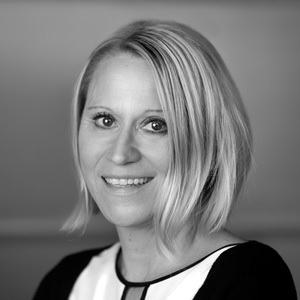

With smartphones and editing programs, nowadays, anyone can quickly create their own video. But to score in B2B marketing, you need professional, high-quality video content, which goes through several phases in our production in advance. How does a successful video production work? Today we'll take you behind the scenes for a look at our creative workflow. Step by step, from the customer briefing to the film – that´s how gripping video content is created in our motion design department.
We understand industry. And we love highly complex topics. That's why we've been developing B2B films for industrial clients with high implementation quality for many years. But the path to a first-class end product does not take shortcuts. From the first conversation to the development of a coherent storyboard to the final touches in color correction, numerous steps are necessary before you achieve a spot landing. Our motion designers have a high level of expertise in 2D and 3D animation, motion design, video, visual effects, concept art and sound design, bringing any film idea to life. 9 steps to the perfect video: and ... Action!
Your kick-off for a successful project. The first phase is critical to the success of your project.
If you are still unsure about what exactly you need – no problem. We have a good sense of what suits you and offer room for creative consultation.
Sifting through material is an important, although time-consuming, step. Regardless of the source – stock footage or original shots – it is inevitable to sift through and organize the material. While this step is time-consuming, it pays off by increasing efficiency in the rest of the production process.
Clear vision instead of loose ideas! Based on the established information, we develop initial ideas.
The treatment serves as a rough guideline for the realization of your project and includes:
To give you a better idea of the visual setting, we add initial mood images to the treatment. These serve as visual anchor points to illustrate the atmosphere and aesthetics of the planned film.
For long-term clients whose demands and target audience we know well and where we have a lot of experience in project implementation, we skip this step and present the storyboard right away.
The storyboard goes beyond the treatment and provides:
The storyboard is your ultimate guide, leaving no room for misunderstanding.
Well planned is half shot! For the shoot, we hire film crews who receive a complete shooting schedule from us. All details concerning the shooting day are meticulously determined in order to be able to work as productively and efficiently as possible afterwards. This is a very time-consuming task that requires a great deal of organization and involves timing and naming everything: the timing of the models, the locations, the outfits, the lighting for the cameras and their setup and dismantling, special equipment and sound technology. A list that can be extended at will. An exact schedule is especially important for production shoots because there is often only a small window of time available.
When working out 3D animations and renderings, we proceed in the same detail as on a film set:
It's like a masterpiece of digital art, where every pixel has its place.
Welcome to the heart of your project! This is where a collection of scenes becomes a complete work:
The rough cut is your first look – from animations to edits – at what will become an all-around great final product. It's the most time-consuming phase of the entire project, but also the most crucial. It's here that we decide whether the story in the chosen format will really hit the spot. Sabine Braun, our Senior Account Manager with years of experience, knows exactly how to master this phase to create a masterful final product.
"The amount of work depends very much on the complexity of the film. For example, do we rely on real shots or does it need animation? This is where the number and quality of animations, textures and rendering times are crucial: Do we keep it simple or photorealistic? Basically, this phase bundles 80 to 90 percent of the production time, depending on how far we push it. In some very comprehensive cases, we get the storyboard bindingly approved and even almost finish producing the film at this stage."
Now you are the director! From music selection to lyrics, this moment is your opportunity to add your personal touch to the project. Whether you're rearranging scenes or choosing the final music, we're open to your ideas. While complex animations are not so easy to change, there is always room for creative adjustments in editing and scene selection.
Finished with precision! Last but not least, animated texts, music, sound design and sound effects go into the final polishing stage, adapted to the cut lengths. Here, the motion designer takes another close look at everything: He ensures that the look and feel match the composite renderings and standardizes the color grading so that the colors correspond exactly to the desired aesthetics. The quality check of the high-res data is the final step to your video.
If high-quality video content is to perform well in your B2B marketing, all content and technical details must be perfectly coordinated. Technical knowledge, precision, good craftsmanship and state-of-the-art software are required to ensure that every single step is carried out to a high performance standard. And a lot of intuition and experience. A package with which we translate every message into moving images. How does it work in detail and what is possible? Read more in our next article.
